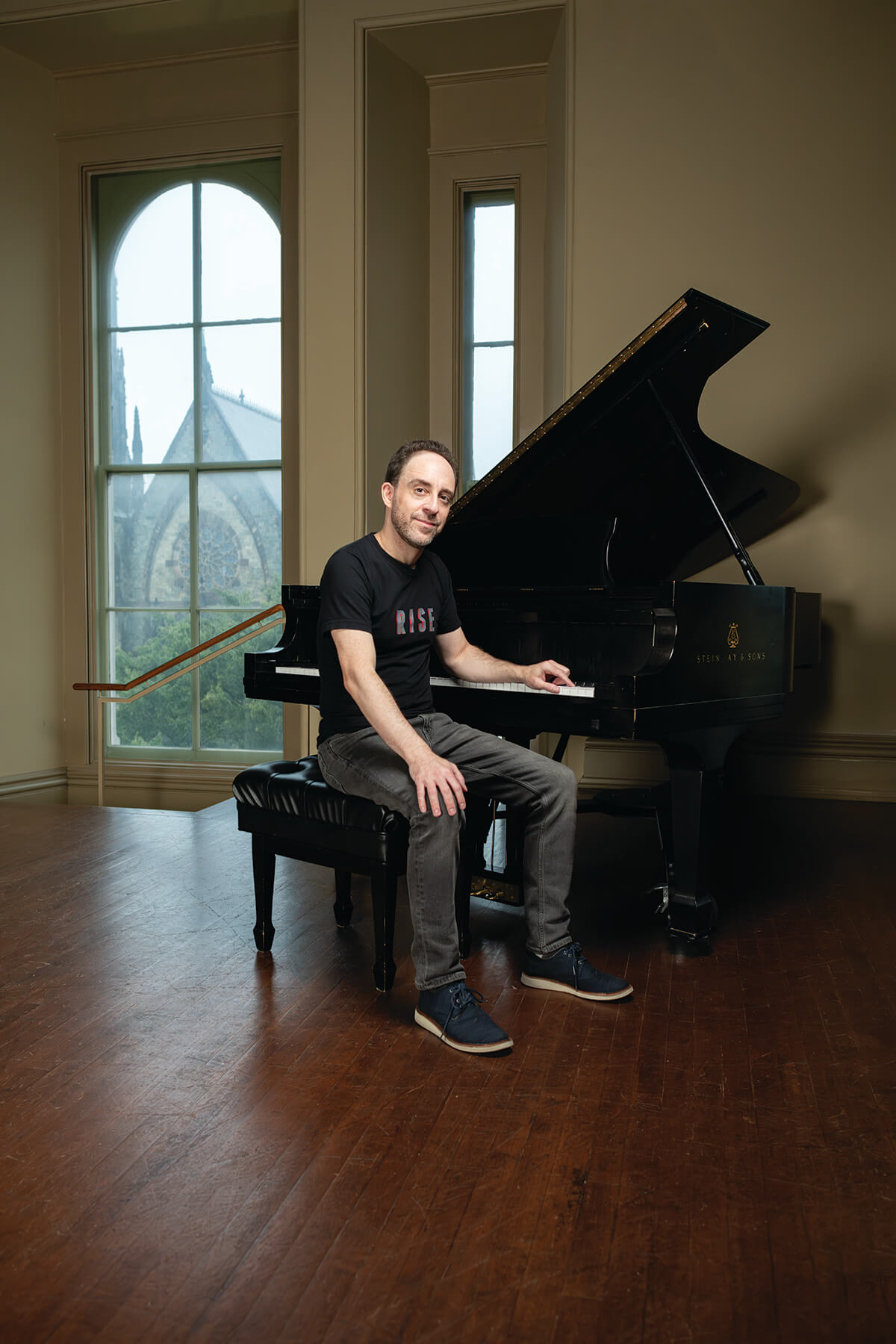Arts & Culture
Composer Judah Adashi Combines Passions for Arts and Activism in New Peabody Course
There was a time when Adashi briefly flirted with quitting music altogether to become a full-time activist. Then he realized that he could do both.

Judah Adashi says his interest in social justice was sparked when he was a student at Gilman, of all places. He took a class on Black history, with a particular focus on civil rights, and the injustice of it all stuck with him. He went to Yale for undergrad, then Peabody for his doctoral degree in music. He was composing and studying, but also volunteering for Barack Obama’s campaign. The idea of being a “community organizer” called out to him, and he briefly flirted with quitting music altogether to become a full-time activist. Then he realized that he could do both—you could be an artist and an activist—and that the two were inextricably linked.
He’s gone on to found Rise BMore, an annual performance that commemorates the death of Freddie Gray, and serves as an ambassador for the Baltimore Peace Movement. Now, he’s bringing his passion full circle, with a new class at Peabody titled “Art and Activism in Baltimore,” which started this fall.
Your class is not called “Art and Activism,” but very specifically “Art and Activism in Baltimore.” Why?
When I look at the Baltimore arts scene, arts and activism are pretty deeply intertwined. Our Black artists are the heartbeat of the city. And that’s what I draw sustenance and inspiration from. And I want my students to know that, because I don’t think it’s immediately apparent when you go to a conservatory located in just one block of Mount Vernon. I mean, it happens to everyone in college—you could easily miss the city around you.
It does seem like Peabody is becoming more connected to Baltimore.
There has been a culture shift. I think Peabody is just a little more in the world than it used to be. I mean, Peabody as a physical space—you might as well be in, like, Leipzig in 1728. Not only do you have the college bubble, but it’s like a bubble within that bubble…So I think being someone from here, who loves Baltimore as much as I do, any time I can make space for Baltimore in that building, I really jump at the opportunity.
Most of your students aren’t from Baltimore. And many will leave after college. Is that a challenge?
I think about this a lot: What does it mean to be an artist in a city when you’re in college? Do you just live here? How much should you invest in the city? It’s hard. But Baltimore is one of those cities where, if you embrace it, it will embrace you back.
A composer can write music with themes of injustice. But for a musician who doesn’t compose, being an arts activist is a little trickier.
You can pursue these things independently. You can be an oboe player who also does volunteering or is part of an [activist] community. Of course, we could have a whole other conversation about the power of music just to bring joy to people. One of my students works with the Helping Up Mission to bring music [to unhoused people]. And that’s 100-percent activism in my book.
One of the things I’ve asked my students to do is what I call a “peace audit”—which is to write down some of the peaceful experiences they’ve had in Baltimore. Most of what goes on around us in Baltimore is beautiful and joyful. To me, simply uplifting and celebrating Baltimore is a form of activism.